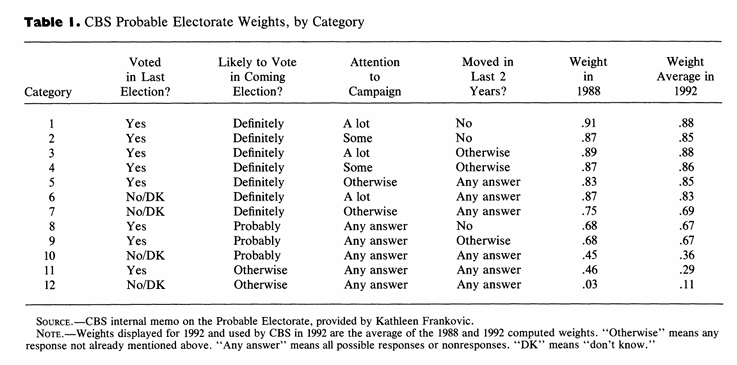Re-weighting is common. Here’s a 1993 academic article that discusses the procedures that major polling organizations used for the 1988 and 1992 elections:
Voss, S., Gelman, A., & King, G. (1995). The polls—A review: Preelection survey methodology: Details from eight polling organizations, 1988 and 1992. Public Opinion Quarterly, 59(1), 98-132.
From the “Adjusting the Data” section:
Pollsters use poststratification to adjust for known differences between the sample and target populations. The most common poststratification technique is called “weighting,” a method of adjustment based on assigning a numerical weight to each individual in the sample and then estimating population quantities by weighted averages of the individual responses. Weighting is useful because responses to particular questions of interest tend to correlate with broad demographic categories such as sex, race, region, age, education, or income. When poll data is unrepresentative on one of these categories, the analyst is alerted that the sample also might be inaccurate in its estimation of public opinion or preferences. For example, a survey that undersamples African Americans will almost certainly also underestimate support for Democrats. Therefore, in deriving population estimates fromtheir sample statistics, organizations generally weight their reportedresults to take into account demographic discrepancies between sample and population.
Here’s how they describe CBS:
CBS uses several stages of weighting. A demographic weight is determined by five steps, based on (a) number of adults in the household, such that the weight is the average household size within the U.S. population divided by the number in the respondent’s household; (b) number of telephone lines in the household, with a weight of 1 for one-line homes and 0.5 for homes with more than one line (regardless of how many more); (c) a ratio of households within each of the Census Bureau’s four regional categories by the sample number in each region; (d) race by sex ratios, where race is divided as black and nonblack; (e) age by education ratios, with age divided into four groups, 18-29, 30-44, 45-64, and 65 years and older, and education divided into four groups as well: “not a high school graduate,” “a high school graduate,” “some college without graduation,” and “college graduate.” Sometimes educational groups are collapsed within age groupings, particularly when cell sizes are very small or when weighting effects disproportionately influence educational differences within age categories.
Then they describe how they weight be probable electorate category:
So it’s been happening for minimum 40 years and almost certainly much longer.


